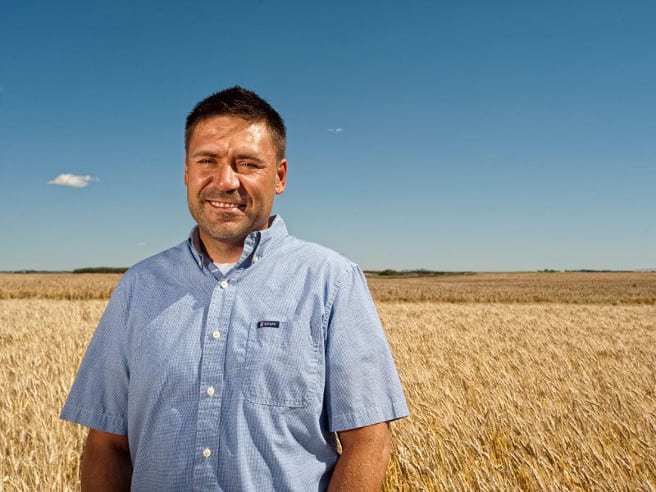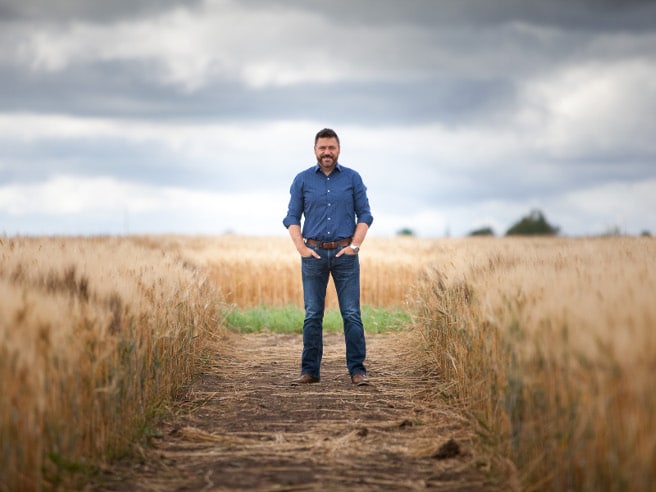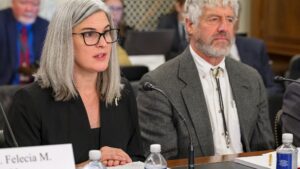Curtis Pozniak took the reins as the director of the Crop Development Centre last summer. As the CDC marks 50 years in 2021, we sit down with him to chat about his priorities.
Germination: Thanks for your time, Curtis. Last year must have been quite the experience for you, taking over as managing director of the Crop Development Centre (CDC) during COVID-19. That must have been a real baptism by fire.
Curtis Pozniak: I became director July 1, which was mid-pandemic. Pierre Hucl, our spring wheat breeder at the CDC, was interim managing director since January and he stick-handled the required work plans and safety permits we needed to get field activities going. He did a great job getting us back to the field at about 40-50 per cent capacity. We’re in a situation now where we have finished harvesting our trials and we were successful in getting our breeding materials to our contra-season nurseries in New Zealand. It’s been a challenging time, but thanks to Pierre’s leadership, we were able to get through it. Our technical teams were also critical to this year’s success despite working under strict safety protocols.
Germination: Are you done working with wheat or are you immersed in both management and the wheat side?
CP: The director position represents about 30 per cent of my activities. I will still be managing my durum and CPS breeding activities and our associated genetic research. Over the past 16 years at the CDC, our program has grown, and it was important to me to still be immersed in breeding activities.
Germination: Aside from work, what’s been your biggest challenge these past number of months?
CP: Not playing live music! As you know, I’m a guitarist and lead vocalist in a local Saskatoon rock band. Since COVID-19 hit, our gigs have dried up and I’ve only been able to practice in my basement. Playing concerts on stage was something that I used to channel my creative energy, so not being able to play live is something I’ve been struggling with.
Germination: What’s your top tip for staying focused in challenging times?
CP: Prioritize. I think it’s important to recognize that in these challenging times, it’s not possible to do everything, so you have to cut yourself some slack. Pick your battles and don’t look back. Running a large breeding and research program during a pandemic presents its challenges. You have to recognize things are different and if you don’t achieve everything you hoped, that’s OK.
Germination: The CDC turns 50 in 2021. In a word, what does that mean to you?
CP: Success! The CDC has been a phenomenally productive unit, developing well over 480 cultivars that have a significant impact on western Canadian agriculture. We need to celebrate these successes, look to the future and continually define what we’d like to accomplish.
Germination: What are your main priorities?
CP: Three things. First, we’ve modified our CDC management structure to better achieve our vision — to be leaders and be recognized by producers, partners and scientific peers as the leading field crop breeding organization in Western Canada.
Germination: Why is that a big deal for you?

Germination: What’s the second priority?
CP: Risk management. Sometimes it’s hard to find time to look ahead, as you always spend time in the now. We recognize some risks to our vision and some of those risks are organizational. There are also program risks — changes in partnerships, funding, or changes within collaborating institutions that could impact shared resources and testing capacity. These are all risks we need to manage.
One of our biggest risks to achieving our long-term vision, however, is operational risk. This includes land and growth space to conduct our work and aging infrastructure. Over the next few years, I will be devoting significant energy looking to renew our land infrastructure and to build additional growth space to ensure our programs are successful for the next 50 years. We simply do not have enough for continued growth. Programs have been added to the CDC in recent years, like the forage breeding program managed by Bill Biligetu. We have new research activity in agronomy that requires additional space. Infrastructure is aging, and we need to expand that component of the CDC so we can to keep doing what we do.
Germination. What’s No. 3?
CP: Managing the CDC brand is my third priority. The CDC is a household name on the Prairies, largely because our varieties have made a difference to producers’ operations. As I move forward I want to better position, communicate and celebrate the role of the CDC.
Germination: For you, what does the CDC brand encapsulate?
CP: The CDC is a unique place — we have all the components along the innovation pipeline from knowledge creation to translation of science into products in demand by the industry. We are well integrated into the university, the College of Agriculture and Bioresources and its productive departments. Within this space, there’s a discovery research component that generates knowledge, research capacity to validate science and in the CDC, to translate innovation into field-ready varieties, which constitutes the delivery component.
I believe it is this integration of the CDC into a multidisciplinary research organization that has contributed to its success. There is also a major training component at the CDC, where our faculty contribute to teaching, graduate student training, and leading large international genomics-related research projects. All of these things need to be encompassed in our brand. The CDC is indeed a unique place that integrates the whole innovation pipeline from basic discovery research to delivery of product to farmers’ fields, and this needs to be communicated in our brand.
Germination: A lot has changed with regard to public breeding as shifts occur within the industry and government resources get reallocated. New funding mechanisms are being proposed like the Variety Use Agreement (VUA). Regulatory modernization is beginning. What’s your stance on some of these proposed mechanisms for funding both public and private breeding?
CP: It is our vision to be leaders in public breeding and we will continue to be heavily engaged in that space. We work on a large array of crop kinds at the CDC and a one-size-fits-all approach for funding may not work. Our strategy will be a flexible one, encouraging a balanced portfolio of investment from across the value chain. There is no doubt the industry is evolving and will surely look different in future years, but we have seen change before, and I believe our flexible approach has allowed us to adapt our vision and strategies to take advantage of new opportunities. Policy and modernization should be driven by the value chain and I believe the role of the CDC should be to support policy through a scientific, data-driven approach. With a lot happening, we’re still planning to be leaders and an important part of that value chain, and the CDC will continue to adapt to meet the needs of the industry.
Editor’s Note: This story is the first in a series of stories marking the 50th anniversary of the Crop Development Centre that will run during the course of 2021. Stay tuned for more!












